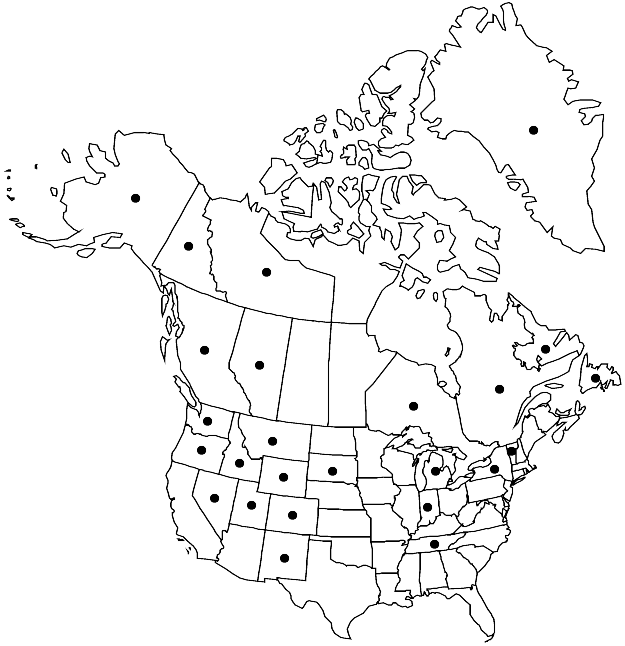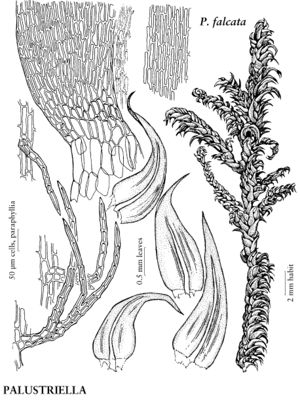Difference between revisions of "Palustriella falcata"
Bryophyt. Biblioth. 44: 136. 1992.
FNA>Volume Importer |
FNA>Volume Importer |
(No difference)
| |
Revision as of 19:45, 24 September 2019
Plants coarse. Stems with paraphyllia few to many, spread on stem or often in ± transverse bands. Stem leaves gradually narrowed to apex, concave; alar cells many, walls thin or slightly incrassate, region not expanded marginally, reaching from margin to costa or almost so; rarely some single basal medial laminal cells abaxially prorate, rarely single cells with papillae. Branch leaves smaller. Perichaetia with inner leaves gradually narrowed to apex, plicate, margins denticulate distally [sometimes with scattered cilia], apex acuminate, laminal cells smooth.
Habitat: Calcareous habitats, springs, shores, irrigated rock
Elevation: low to high elevations
Distribution

Greenland, Alta., B.C., Nfld. and Labr., N.W.T., Ont., Que., Yukon, Alaska, Colo., Idaho, Ind., Mich., Mont., Nev., N.Mex., N.Y., Oreg., S.Dak., Tenn., Utah, Vt., Wash., Wyo., Eurasia, n Africa, Atlantic Islands.
Discussion
Palustriella falcata is widespread in the northwest, less common in the northeast, and absent in northern-central and high-Arctic areas. The species has been misunderstood in North America; most specimens identified as P. commutata (Hedwig) Ochyra [synonym Cratoneuron commutatum], and the few P. decipiens (Notaris) Ochyra records, belong to this species. A specimen in the herbarium of the Missouri Botanical Garden, with the locality "Salem" on the label, apparently from North Carolina, belongs to P. commutata. However, because the original label information does not indicate that the specimen was collected in North America, its true origin is doubtful.
Selected References
None.
